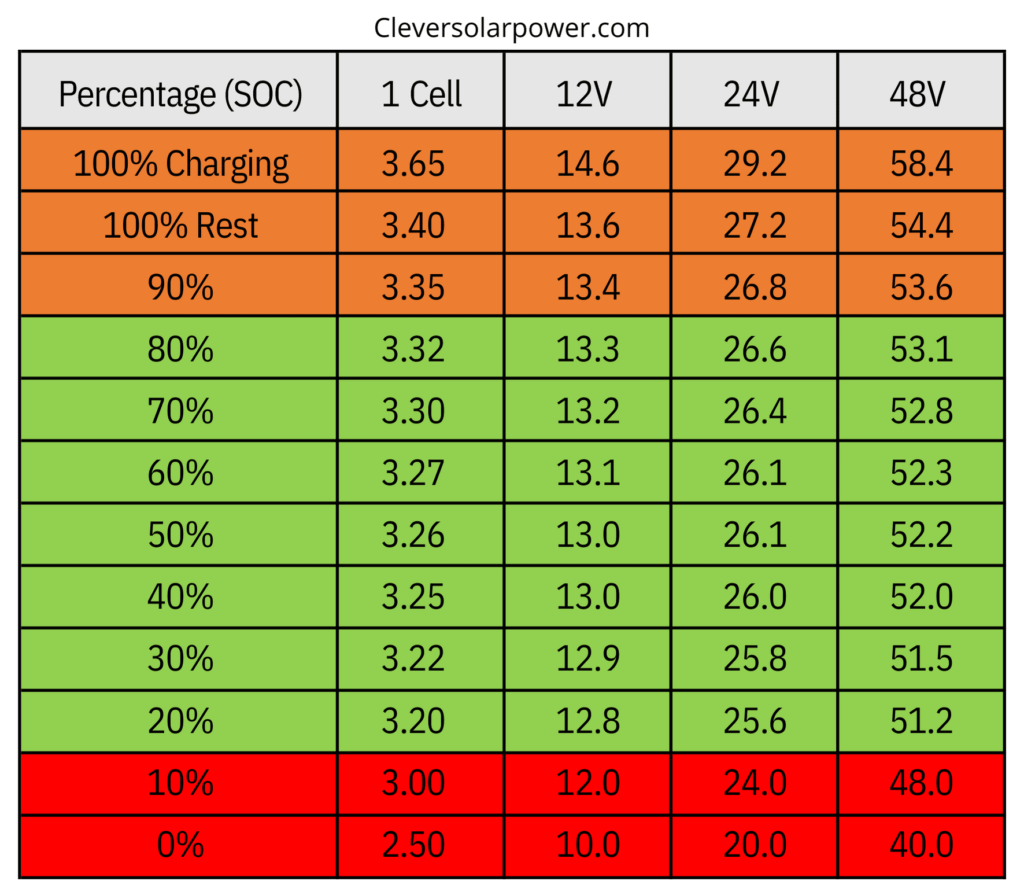This series of posts on a lead-acid to lithium battery upgrade(?) regards a fairly decent power system on a boat. The new batteries are Lithium Iron Phosphate (LFP) chemistry, the kind that does not burn. I built two batteries out of individual cells and they are performing well, though not always as expected. I have not figured out what the battery management systems (BMS) regard as a cycle or why they don’t always get along with each other the way lead batteries do. Even though the two have been in parallel the whole time, one shows 5 cycles and the other shows 7 cycles. At a rated life of 6000 cycles they are likely to outlast me. Then again, at my age, my 24 year old pickup truck probably will, too.
The latest interesting or bizarre behavior to come forth is what happens when the batteries are charged. While I have been using the boat for EV charging, there have been times when it got fully charged and strange things happened. Oh, in case you are wondering, the hot dry weather has not left enough water in the river for me to actually do any boating.
The inverter was chirping with an overvoltage alert. The hateful new charge controller was displaying a voltage error, while otherwise not seeming to work. Upon investigation, a couple of things came to light. First, understand that the BMS is the defender of the battery. If the voltage hits the high or low preset, it literally disconnects itself from the system. They will reconnect if there is a load and enough power to run it, but they won’t accept a charge until they jolly well feel like it. So, if you get fully charged and disconnected, you charge controllers go bonkers, charging their own output capacitors and the input capacitors of the inverter. As the panels are seemingly able to output a kilowatt, all sorts of gadgets can operate without troubling the batteries. The problems come when the capacitors bleed down and the charge controller lets forth a spurt of power. The charge shoots up rapidy and overshoots a bit, so the meter reads about 30 volts.

I had intentionally set the charge controllers at the max level the batteries can take under charge, while setting the BMS somewhat lower. That caused a bit of a higher voltage, but it was exacerbated by one of the charge controllers being out of calibration. This particular module lets you program a fudge factor higher or lower to let the user set things spot on. This one was leaning high, so the 24v system was pulsing around the 30v level. That’s not enough to hurt most things, but it can make them behave oddly. Once I calibrated the meters and set the output to around where I would charge a lead acid battery, all was much better behaved.
One other thing I did, since the boat is not being used except as a charging station, was to lower the peak charge. LFP batteries are perfectly content to stay at less that full charge and being held at a high state of charge is not an especially good idea. When I hit the water again I will nudge the parameters back up a little.
So the moral of the story is to make sure the system is calibrated and watch for anomalies. In the meantime, I am scheming as to how I will manage to come up with the loot for a LFP replacement for the massive pile of batteries that power my house. Should I go with one of these packaged systems like I am seeing or should I cobble up my own? The package systems are pretty, but most use the flammable Li-Ion style battery and some come from dubious makers. If I build it myself, I’ve nobody to blame but myself. We’ll see.
Meanwhile, temperatures are moderating and I am able to put some of the house back on solar instead of just running the a/c on it. Nothing like a few weeks of 105 degrees to make 95 feel comfortable and 85 feel like heaven on earth.–Neal
